Scientific name Hydrangea Rank Genus | Clade Angiosperms Family Hydrangeaceae Higher classification Hydrangeaceae | |
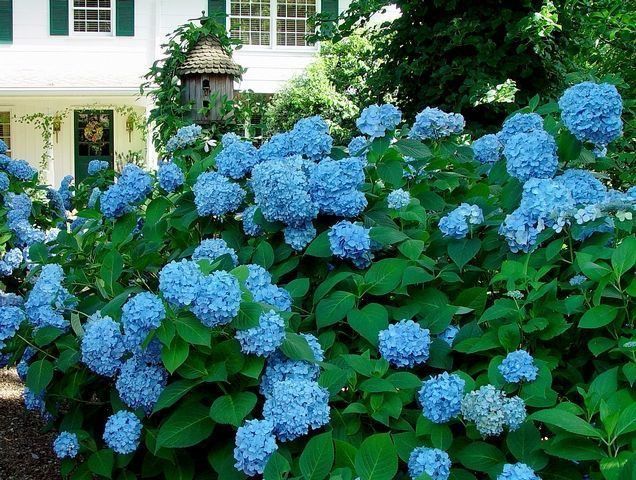 | ||
Lower classifications French hydrangea, Panicled hydrangea, Oakleaf hydrangea, Hydrangea arborescens, Hydrangea petiolaris | ||
How to choose and plant hydrangeas this old house
Hydrangea (/haɪˈdreɪndʒiə/; common names hydrangea or hortensia) is a genus of 70–75 species of flowering plants native to southern and eastern Asia (China, Japan, Korea, the Himalayas, and Indonesia) and the Americas. By far the greatest species diversity is in eastern Asia, notably China, Japan, and Korea. Most are shrubs 1 to 3 meters tall, but some are small trees, and others lianas reaching up to 30 m (98 ft) by climbing up trees. They can be either deciduous or evergreen, though the widely cultivated temperate species are all deciduous.
Contents
- How to choose and plant hydrangeas this old house
- Life cycle
- Colors and soil acidity
- Partial list of species
- Cultivation and uses
- References
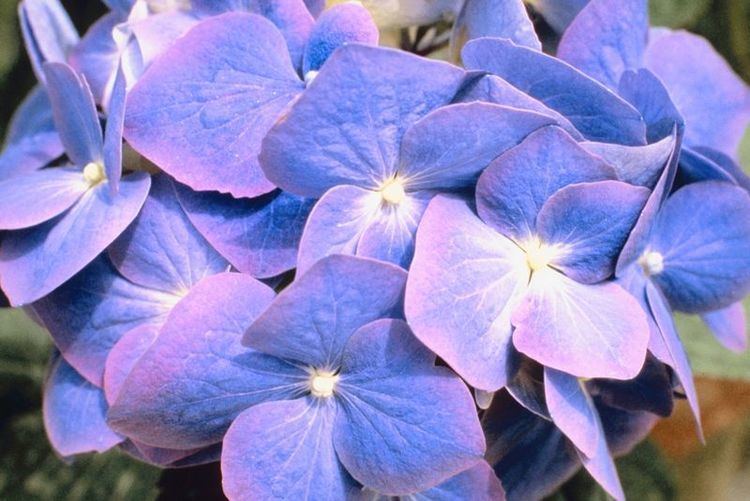
Having been introduced to the Azores, H. macrophylla is now very common, particularly on Faial, which is known as the "blue island" due to the vast number of hydrangeas present on the island.
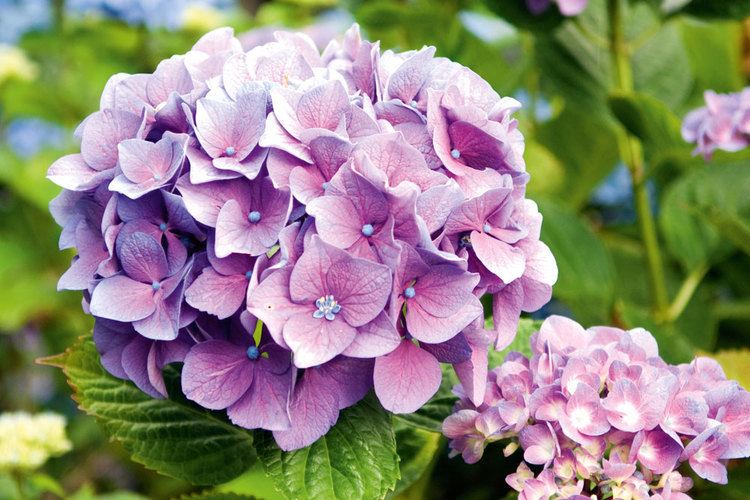
Life cycle
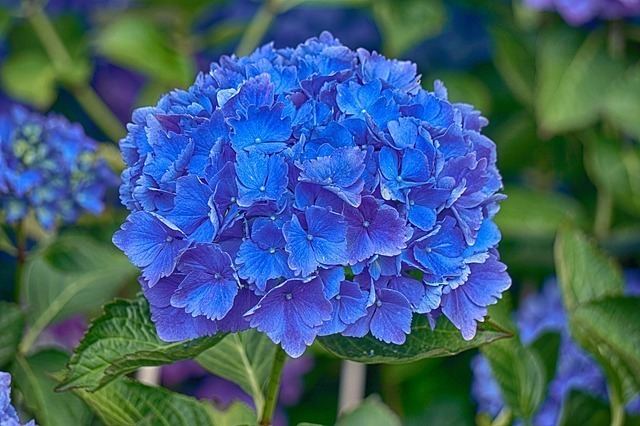
Hydrangea flowers are produced from early spring to late autumn; they grow in flowerheads (corymbs or panicles) most often at the ends of the stems. Typically the flowerheads contain two types of flowers: small non-showy flowers in the center or interior of the flowerhead, and large, showy flowers with large colorful sepals (tepals). These showy flowers are often extended in a ring, or to the exterior of the small flowers. Plants in wild populations typically have few to none of the showy flowers, while cultivated hydrangeas have been bred and selected to have more of the larger type flowers.
There are two flower arrangements in hydrangeas with Corymb style inflorescens, which includes the commonly grown "bigleaf hydrangea"—Hydrangea macrophylla. Mophead flowers are large round flowerheads resembling pom-poms or, as the name implies, the head of a mop. In contrast, lacecap flowers bear round, flat flowerheads with a center core of subdued, small flowers surrounded by outer rings of larger flowers having showy sepals or tepals. The flowers of some rhododendrons and viburnums can appear, at first glance, similar to those of some hydrangeas.
Colors and soil acidity
In most species the flowers are white, but in some species (notably H. macrophylla), can be blue, red, pink, light purple, or dark purple. In these species the color is affected by the presence of aluminum ions which are available or tied up depending upon the soil pH. For H. macrophylla and H. serrata cultivars, the flower color can be determined by the relative acidity of the soil: an acidic soil (pH below 7), will have available aluminum ions and typically produce flowers that are blue to purple, whereas an alkaline soil (pH above 7) will tie up aluminum ions and result in pink or red flowers. This is caused by a color change of the flower pigments in the presence of aluminium ions which can be taken up into hyperaccumulating plants. Lowering the pH of potting soils or mixes usually does not change the flower color to blue, because these soils have no aluminum ions. The ability to blue or pink a hydrangea is also influenced by the cultivar. Some plants are selected for their ability to be blued, while others are bred and selected to be red, pink or white. The flower color of most other Hydrangea species is not affected by aluminum and cannot be changed or shifted. Hydrangeas also have a nickname called 'Change Rose'.
Partial list of species
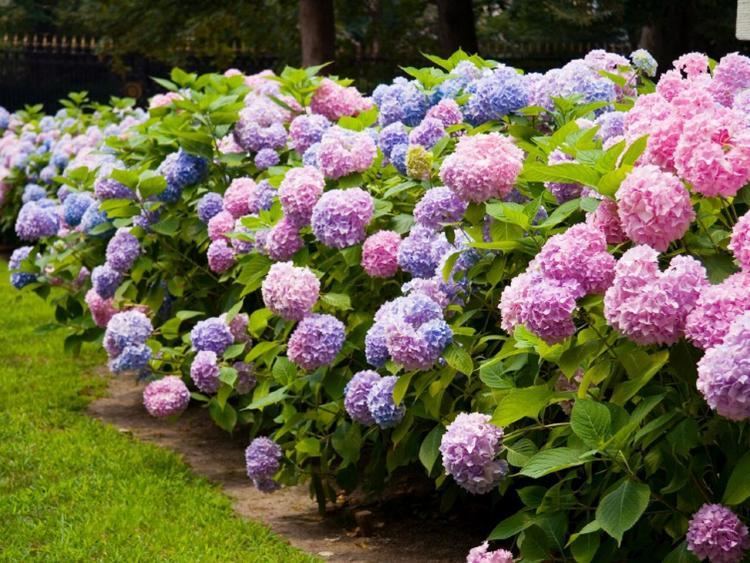
Cultivation and uses
Hydrangeas are popular ornamental plants, grown for their large flowerheads, with Hydrangea macrophylla being by far the most widely grown with over 600 named cultivars, many selected to have only large sterile flowers in the flowerheads. Some are best pruned on an annual basis when the new leaf buds begin to appear. If not pruned regularly, the bush will become very 'leggy', growing upwards until the weight of the stems is greater than their strength, at which point the stems will sag down to the ground and possibly break. Other species only flower on 'old wood'. Thus new wood resulting from pruning will not produce flowers until the following season.
Hydrangea root and rhizome are indicated for treatment of conditions of the urinary tract in the PDR for Herbal Medicine and may have diuretic properties. Hydrangeas are moderately toxic if eaten, with all parts of the plant containing cyanogenic glycosides. Hydrangea paniculata is reportedly sometimes smoked as an intoxicant, despite the danger of illness and/or death due to the cyanide.
In Japan, ama-cha,甘茶 meaning sweet tea, is another herbal tea made from Hydrangea serrata, whose leaves contain a substance that develops a sweet taste (phyllodulcin). For the fullest taste, fresh leaves are crumpled, steamed, and dried, yielding dark brown tea leaves. Ama-cha is mainly used for kan-butsu-e (the Buddha bathing ceremony) on April 8 every year—the day thought to be Buddha's birthday in Japan. During the ceremony, Ama-cha is poured over a statue of Buddha and served to people in attendance. A legend has it that on the day Buddha was born, nine dragons poured Amrita over him; ama-cha is substituted for Amrita in Japan.
In Korean tea, Hydrangea serrata (hangul:산수국 hanja:山水菊) is used for an herbal tea called sugukcha (수국차) or ilsulcha (이슬차).
The pink hydrangea has risen in popularity all over the world, but especially in Asia. Pink hydrangeas have many different meanings, but generally mean, "You are the beat of my heart," as described by the celebrated Asian florist Tan Jun Yong, where he was quoted saying, "The light delicate blush of the petals reminds me of a beating heart, while the size could only match the heart of the sender!"
